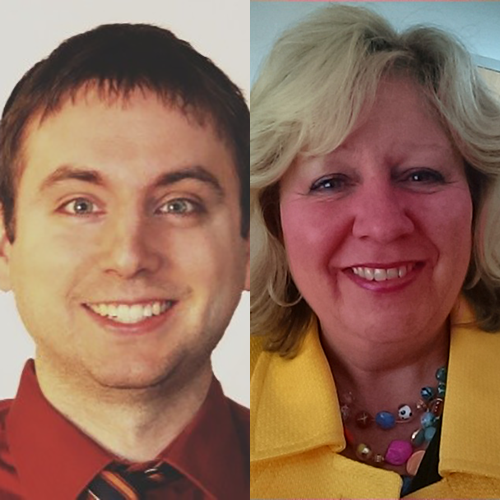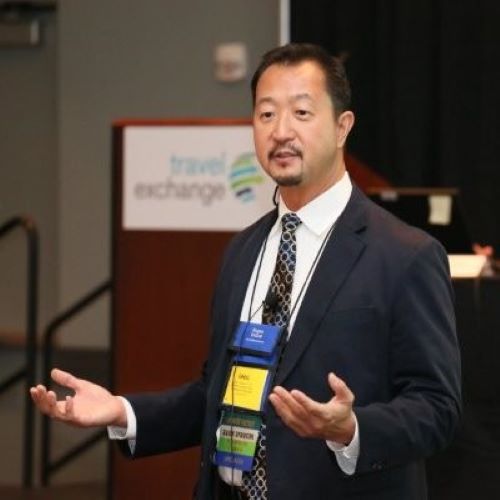Shane Rhinewald and Karen Dodson
Episode 90: Inviting the World to Play, with Shane Rhinewald and Karen Dodson
What do you do when a destination is perceived as being geared toward a certain age group or other segments of the population? That has been one challenge for the Strong Museum of Play in Rochester, New York. In a market like Rochester, with plenty to keep children and adults occupied, capturing attention even with the idea of play can be a challenge.
On this episode, we explore the study and curation of play, and how to market a museum dedicated to playing to travelers and tourists of all ages. We are joined by two guests, Shane Rhinewald and Karen Dodson.
Shane is Senior Director of Public Relations at The Strong Museum of Play, the ultimate play destination for all ages and the only museum in the world dedicated to the study of play. Shane works with the media and external partners to share the museum’s stories; from public programs and tourism programs to exhibits and new collections. He also leads the induction team for The Strong’s National Toy Hall of Fame, and World Video Game Hall of Fame, which receive billions of media impressions and international attention each year. Shane has a bachelor’s degree in History and a master’s degree in Journalism. He has been with the museum for 10 years in a variety of marketing and PR roles. Shane was also the 2017 Chair of the Visitor Industry Council and past Chair of Visit Rochester’s Social Media Committee.
We also have Karen Dodson, Tourism Sales Associate at The Strong Museum of Play. Hired in 2016, Karen’s role was established to help build the travel trade market segment and increase visitation, both domestically and internationally. Karen’s more than 30 years’ experience working in the travel trade industry has included both regional and local hotel director of sales and marketing, 10 years managing a 425,000 square foot 100 plus store retail outlet, to planning and escorting outbound adult and student tour groups from the Rochester and surrounding areas. All of this has enabled her to bring her wealth of knowledge and experience to her current position. Karen also has served as the 2015 Chair of Visit Rochester’s Visitor Industry Council, has been a past Chair of the Travel Trade Committee of which she continues to be a member, and has been a past President of a local area Chamber of Commerce and currently serves on the ABA Orientation Committee for the 2019 marketplace.
More on Shane and Karen’s Background
Thank you for joining me, Shane and Karen.
Shane: Thanks for having us on, Nicole.
Karen: Yes, thank you.
I’m excited to speak with both of you today. I love doing these interviews where we get two perspectives all in one. It’s great for me and for our listeners to learn from both of your perspectives. But before we get started, I’d like you to tell a little bit about each of your stories. I find it adds so much more context to our conversation. So, Shane, can we start with you? Can you tell us a little bit about your journey in your own words?
Shane: In your introduction, you had mentioned all of the stories about The Strong Museum that I am fortunate to share in. I guess that’s kind of where it starts for me. I’ve always been a storyteller. I was four years old and telling my mom stories and making her write them down and creating my own books as a young child. And that sort of carried through. My background originally was in journalism, I went to school and received a master’s degree. I worked for a few years in journalism, which is fantastic and necessary occupation, but unfortunately, one that is always changing, the landscape is very uneven there.
So I wondered how I could take these storytelling skills and make them translate into something else. That’s where marketing and public relations really came to the forefront because we are in the business of telling compelling stories, and that ties so well into tourism. In order for people to want to come to our cities, to come to our attractions and organizations is to share that information in a compelling way with them.
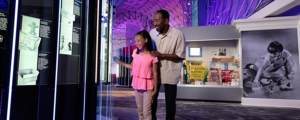
[bctt tweet=”“We are in the business of telling compelling stories. In order for people to want to come to our cities, to come to our attractions and organizations is to share that information in a compelling way with them.” – @sdrhinewald #podcast”]
So that’s how I’ve ended up here. I’ve been very involved with Visit Rochester, our tourism bureau. I’ve enjoyed making those connections with people, creating that network and working on partnerships that extend the reach of everybody here in Rochester, encouraging people from all over to come and visit us.
That’s awesome. I find so many of my guests have those life journeys that go way back. Your interest in storytelling started at the age of four. Now that has propelled you and evolved into where you are today. Thank you for sharing that.
And, Karen, can you give us a little bit more about your journey and your career path?
Karen: Sure, Nicole. I started my career in this industry. I was very fortunate I was in the right place at the right time. I had moved to Corning, New York and had gotten a job working for Corning Enterprises at a hotel. And those of us who are dinosaurs in the industry will remember a woman call Florence McBride, who took me under her wing and mentored me in this business. Over the years, I worked for various hotels, always doing hotel sales, but my love and my passion was in the motor coach destination marketing area.
For a time I left the hotel industry and went to work managing a retail outlet center, but always keeping my hands in destination marketing and motor coaching, trying to get the motor coaches to come to the shopping center. I have always been a part of this great industry. Obviously, I enjoy the people that I meet and the people that I work with. Everybody has a great story to tell. I am very fortunate, like Shane, to have a great story to tell about The Strong and all the wonderful things there are to do here at the museum.
I love that you brought that whole idea of mentorship up because I think that’s important for folks as they’re going through their career journey. To find that mentor at such an early age, I’m sure, made a huge difference in where you went from there.
Karen: It really did. Now it has made me aware of how important we are to the people coming up in our industry. Mentoring and helping newer people to grow in the industry is a privilege. I think having the opportunity to be Chair of Visit Rochester certainly gave me the vehicle to be able to do that to help others.
I think that’s great. You’re right, at some point we always have our mentors that we look to, and then we also become the mentor to the next generation.
Creativity and Collaboration
On this podcast, as you both know, we like to focus on creativity and collaboration. I like to dive right in on the topic of creativity, so we’ll start with you, Shane. The tourism and hospitality industry is very competitive, and it’s not just competitive in terms of other destinations or in your case maybe other ways that people can spend their time, but also just in breaking through the noise and really trying to stand out. And so I’m wondering what you have done to help The Strong stand out from the crowd?
Shane: The Strong Museum is a completely unique museum. It’s the only one like it in the world, but that wasn’t always the case. It’s been an evolution to get to the point where we can now say there isn’t another museum in the world that is all about the study of play; what is play, why is play important? There isn’t another museum that is a history museum at its core, but also kind of masquerades as more of an interactive hands-on museum. So that combination makes us unique, makes us stand out. But it took us many, many, many years to get there.
When the museum opened in 1982, it was focused on our founder’s original collections of toys and dolls and looked at them through the lens of mass industrialization and how these things were produced. The idea in the early ’80s of a museum about play was almost unheard of. People would’ve said, “That doesn’t sound like a museum.” So it was a journey over time and I’ve gotten to be a part of it the last 10 years. In that evolution, we’ve also gotten focused on our core collections, which were our founder’s artifacts related to play, her toys and her dolls, and said we’re going to do something differently. We’re going to look at history through this lens of play. Nobody else is doing it.
That’s a great perspective. Visitors today are looking for that more interactive and more engaging experience, right? They want that even multi-media experience when they go into a museum. History museums are moving in that way. But what I love about what you just described is how you took your core of being this history museum and added this whole element of the study of play. That opened up so many other avenues for you. Am I hearing you correctly?
Shane: Yes. And there are great museums in cities all over the world, so we wanted this to be a museum where you could experience it however you wanted to experience it. If you come with your family you can go hands-on, be interactive, walk through a giant pop-up book, “shop” in a Super Kids Market which is kind of a pint-sized grocery store and just have fun and experience it that way. But if you are an adult tour group and you want to see things that you can’t see anywhere else, we can do that. If you want to learn about American history and have it interpreted for you, you can see the original Monopoly or the first Barbie doll. You can see what was happening in America at the time that those things came about and how our cultural values were reflected in those places.
Excellent. Karen, I’m wondering with the motor coach and the international visitors that you’re trying to attract, how are you positioning The Strong to really get the attention of that market?
Karen: Well we’ve done a lot to position ourselves. I mean we’re members of ABA, we’re members of NTA, we’re members of ONTA, Ontario Motor Coach Association. And we do attend the international trade shows, like World Travel Market and ITW. So that was the first step to get ourselves out there. Then the interactive programs that we designed for the motor coach and travel trade really allows people to do experience exactly what they want to.
When you’re having those conversations at the trade shows, what are the things that are resonating most with those buyers as you’re talking about this unique attraction that you have; this museum that’s focused on the study of play.
Karen: I think what makes us so unique. What really raises people’s eyebrows is when we start talking about the twelve iconic tours that we offer with our twelve iconic collection pieces. They will come and hear the stories behind the favorite toys and games and dolls that they grew up with and that they love; how they came to market, the arc of their popularity-those details really fascinate people. That really is what makes it so unique in the visits here for our adult tours.
I think packaging things like that, the 12 iconic tours, this whole idea of focusing in on 12 of your most iconic collection pieces and packaging that up. It seems to me like that makes it a little bit more consumable, right, for that market rather than looking at everything that you offer and trying to figure out what would make the most sense. Am I tracking with you?
Karen: You are absolutely right. Then what’s interesting is when they actually get here and they do that and they go off and explore on their own. The stories that we hear back from people reminiscing about the toys from their childhood and their children’s childhood. It’s just so much fun to watch that evolution while people are here at the museum.
Overcoming Challenges By Changing Perceptions
I’m sure that is fun. That’s great. So this next question is for Shane. I’m wondering if you can share a challenge that your organization has faced and the creative solution that came as a result of that challenge?
Shane: Yes. Karen has been working on some group tour projects. One of our biggest challenges there has been the perception, especially here in the community, that the museum is for families or it’s just for kids. That’s something that as Karen goes to tour operators and tries to take this to market more nationally, can definitely stifle her approach. Adult tour groups don’t want to stop if it’s something just for kids. We’ve had to fight through that perception to take our story out there, to get a little bit more creative with how we market to that audience.
So at one point, we did a full photo shoot that was with adult tour groups. We wanted to show people, “This is for you. This is something that you can do.” You can see those 12 iconic artifacts Karen was just talking about – that you can’t see anywhere else in the world here and get back on the bus and be on the way to Niagara Falls or beyond.
Sometimes you need to take a step back to see the obvious. Like looking at your own collateral and understanding the images can either reinforce the wrong perception or change the perception.
Shane: Exactly right. And then we looked a little bit differently at some of our other programs. What can we offer? How can we create an itinerary through the museum that makes more sense for the adult audience? Even something as simple as when we give a tour; we sort of it give it backwards now. The first part of the first floor is a little bit more kid-friendly. We have a Sesame Street exhibit, we have that pint-sized Super Kids Market. So let’s not go there first for the adult tour group. Let’s go upstairs where the artifacts are out and there are cases and there’s interpretation happening. So simple things like that have started to help us shift that perception.
Those are great examples. And, Karen, with so much happening with domestic and international business right now, looking into the future is there a project that you’re really excited about in the coming months?
Karen: Well I think the one thing that we’ve focused on recently has been the student tour market. We’ve created some programs working with local area colleges that have gotten some great attention. We’re working with Eastman School of Music here in Rochester. Performance groups can come into town, take a master class over at Eastman School of Music, and then come to The Strong in the afternoon and put on a performance. These are all programs that we’ve put together here at The Strong to be able to market out there to the companies that are now doing student travel.
The other project program that we’ve put together recently is working with Rochester Institute of Technology (RIT.) They have the first-degree program ever in Video Game Design and Development. Your class could go there and take a two-hour introductory course on video game design and graphic design. Then come to the Strong and work with one of our curators and take an hour class on the history of video games, and then play their way through video game history.
So it’s exciting to see these programs, to work on them and see them evolve and go out in the market and actually sell them and see that it’s successful.
Those are really cool. I like both of those examples. Performance groups are a huge segment of the student travel market. And I love the collaboration that you’re describing between the local colleges and finding what’s unique to the area, where you are and where The Strong is located in Rochester, and then putting those collaborations together to offer something super unique. And what a cool opportunity to be able to take a class at the Eastman School of Music and then perform live at The Strong. I think that’s just a really great example of collaboration. I can see why you’re so excited about that.
Karen: Yes, it really, really is a wonderful opportunity for the students and for Rochester to help showcase Rochester and everything that there is to do and see here.
I think, like you said, the collaboration is key; it’s so important. And working not only with other institutions, like the other colleges, but other partners in the area; hotels, other attractions. And a lot of the packages that we’ve put together, collaboration was a huge part of that.
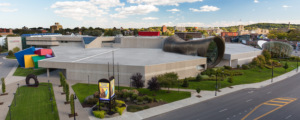
[bctt tweet=”“The collaboration is key; it’s so important. And working not only with other institutions, like the other colleges, but other partners in the area; hotels, other attractions.” – Karen Dodson #podcast #WhyCollaborate”]
Shane, are there any projects that you’re really excited about that you wanted to share?
Shane: For us, the big thing that’s looming over us that’s incredibly exciting is that we’re working on a hundred thousand square foot expansion of the museum. The museum is already massive at 285,000 square feet, one of the biggest history museums in the nation. Well, we’re going to make it even bigger. Some of the focus of this new space will be around our World Video Game Hall of Fame, which we launched in 2015, so we’re really putting a flag in the ground as the preeminent destination for the history of video games, which have completely changed the way people have played over the last three or four decades.
We’re also looking to add more physical play, so there will be, for instance, a ropes course. We’re trying to make Rochester itself the ultimate destination for everything play. So we want people to come out, spend time at the new expanded museum, and work with our partners around town to make this a multi-day experience. Because, as Karen was just talking about, we understand that we’re all in this together, that nobody’s necessarily coming here for just one organization or one attraction. There is plenty of opportunities to work collaboratively to make sure that the guest experience here in our city and our region is top notch.
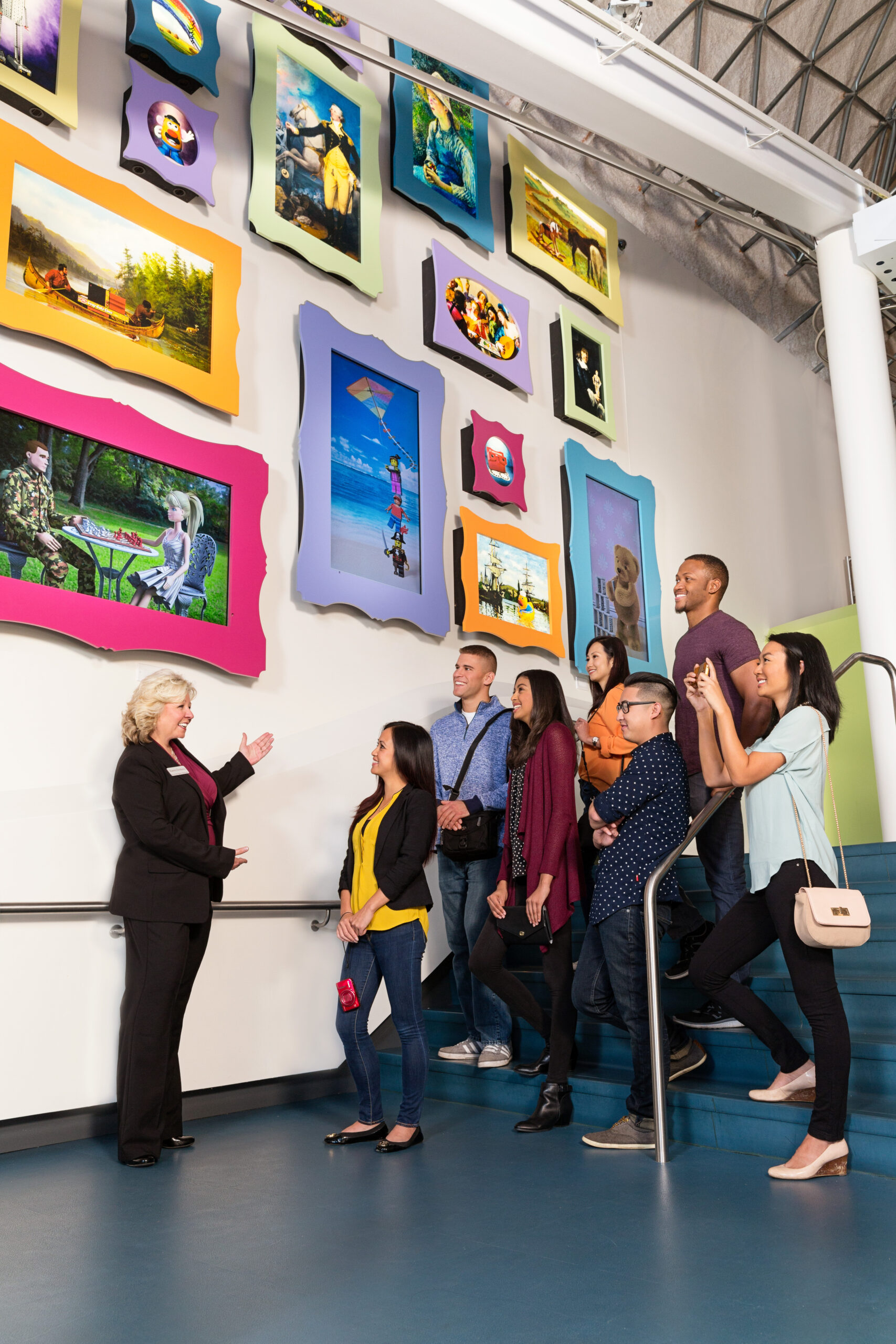
[bctt tweet=”“We are in the business of telling compelling stories. In order for people to want to come to our cities, to come to our attractions and organizations is to share that information in a compelling way with them.” – @sdrhinewald #podcast”]
Coopetition and Collaboration: Enhancing the Visitor Experience
I can completely agree. That is a perfect segue to the next section of our conversation which is focused on what I like to call ‘coopetition’, which is essentially where perceived competitors come together and cooperate on programs that they couldn’t do on their own. I think there are so many great examples of that in the travel and tourism industry. So, Shane, I’m wondering if you can describe in a little bit more detail a time when a collaboration between perceived competitors has really worked for you.
Shane: Well, the great thing about Rochester is that everybody here is completely open to collaboration. I don’t get the sense that anybody feels like they’re competing. We play and get along so well with the other cultural attractions and museums in our area. I know that Karen has worked on itineraries and group tour travel programs with the George Eastman Museum and Genesee Country Village and Museum. And we just had Bristol Mountain, which is pretty close to Rochester, on-site for the last 10 days or so with their mobile aerial park, which helps them promote the fact that all summer long they have their much larger aerial park happening. It’s an added bonus for our guests to have that physical play available on site.
I know that’s a little bit of a small collaboration, but it’s something that’s recent, so it springs to mind and really benefited both parties. We’ve done things with Seabreeze Amusement Park where we’ve had joint marketing campaigns over the course of the summer to target markets that are of interest to us. So everybody here just plays so nicely together.
With the Bristol Mountain example, you’re talking about enhancing your visitor’s experience, but also cross-promoting each other. The two attractions are complementary in terms of the audience that you’re going after and the activities that you’re offering. I also find it interesting that you were able to bring that physical play in, connecting to the long-term plan for the museum, as you had described to us about the expansion. So I think that is a great example too of test something out perhaps before you get into your full-blown permanent ropes course within the museum. Is that part of it too?
Shane: It is to some degree. We’re never intending to replicate what Bristol Mountain and their aerial park do even in the future with the expansion. It’s something that we want people to come, have fun here on site, get that physical play in, but then feel compelled to actually go out and do the larger outdoor course at Bristol Mountain Aerial Adventures. We’re just happy to show off all the fantastic things that we have here in the region to offer.
Yeah, that’s really great. And, Karen, do you have an example of collaboration to share?
Karen: I certainly do. When people are traveling, they don’t see borders. I thought that it was very important for us not only to look at Rochester but look at things from outside of Rochester. So for example, many travelers will fly into New York City, especially the international market. So we worked on the collaborative program called Hippies to Honeymoon that we put together, and it brings people out of New York City heading to Niagara Falls stopping at these wonderful old Woodstock feature and touring that area up there, which is where the hippies come in. And traveling all across New York state, stopping at the baseball hall of fame, going up to Turning Stone Casino, over into Syracuse shopping at Destiny USA, then coming to Rochester and then on over to Niagara Falls, which of course was the honeymoon capital of the world. And that has been a very successful program for us.
It’s really funny because New York State, as we know, is the only state has the same name as a city as well as the state. A lot of people when you’re selling it outside of the area don’t realize that we’re more than just an island, that New York state is 500 and whatever miles long. It’s a big state and there are lots to do here. So, it helps to market more for people to get them to come out of Manhattan and into our state.
Terrific. I think any opportunity you have to be able to help the traveler understand how they can experience what’s there is definitely beneficial. And it sounds like from that particular itinerary that you just described, there were several collaborators along the way – that’s a pretty long stretch from New York City all the way to Niagara Falls. Did you work with all of those stops that you mentioned and pulled that together as a collaborative? Is that how it worked?
Karen: Absolutely, that’s how it all worked. We just all put in our thoughts and ideas as to what should be included and from there the itinerary was created.
We’re also, I should mention, a member of the Wine Water Wonders program. Which is a similar program that brings folks from outside of New York City into Corning, visiting Corning Glass, doing the Finger Lakes/Syracuse region coming over to Niagara Falls. So that’s another similar program that’s been very successful for us as well.
How to Find Good Partnerships
That’s great. Those are two really awesome examples. Karen, I’d like to have you share a little bit with our listeners about how you find good partners for things like this that you’re describing. Do you have any words of wisdom that you can share with our listeners as they’re thinking about entering into their own collaborations?
Karen: I think that you can get more out of being a group of people than you can out of being an individual. So I look for people who are enthusiastic, passionate about what they do, and that are just willing to partner up and work with us. And it usually makes a great romance as far as these itineraries and putting these programs together. I’ve never met anyone who didn’t want to participate.
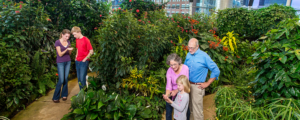
[bctt tweet=”“You can get more out of being a group of people than you can out of being an individual. I look for people who are passionate about what they do, and are willing to partner up and work with us.” – Karen Dodson #podcast #WhyCollaborate”]
That’s right. One of the other things I actually wanted to mention about the itineraries when you have that many people in on it, that means you have that many more people promoting it, right, you’re all promoting each other all the time in your own individual conversations that you might be having, which I think is just great. Not only are you providing this tool for the visitor and a way to experience the state, but you’re kind of building in this cross-promotion throughout the state with all those partners.
Karen: That’s a really good point, Nicole. And that is exactly what happens. So everybody then starts promoting everyone else. I know I do a lot of sales missions with a lot of different partners where we’re going to places like New England or Canada and we’re promoting and we’re doing it as a group. And it helps to work collaboratively together when you’re out there and you’re making your presentation as well. So it’s become kind of the glue that holds everything together.
Shane, do you have any words of wisdom for finding great partners?
Shane: We’re very fortunate here that we’ve had great relationships over the years with Visit Rochester, which is one of the only tourism organizations in the country that actually has a Visitor Industry Council which is completely comprised of those members. So through the relationships, we’ve been able to form through the Visitor Industry Council we found all sorts of fantastic partners. We’ve also been fortunate to have wonderful support from I Love New York at the state level and have worked with them on a number of initiatives to promote both Rochester and New York State as a great destination.
I think I would just echo what Karen said about seeking out people that are enthusiastic, people that have shared and similar goals to you. I think if you approach people, you’ll find that more often than not they’re ready, they’re willing, and they want to collaborate and make things happen.
Those are great points, and I love that you’ve brought in the destination marketing organization Visit Rochester. And you’re right about the Visitor Industry Council, I don’t know of another DMO in the country that has a membership built the way they have theirs as such an active part of what they do. And then don’t forget the state tourism office, and I Love New York and the support that you can seek out there.
So, Shane, I’m wondering if you can share a little bit about managing expectations and how you set the ground the work when you’re working on a new collaborative effort.
Shane: I think the first thing is to just have an honest and a frank discussion with your partners, where both sides layout this is what we want out of this. A good partnership needs to be something that is a win-win. There has to be that give and take. There isn’t a party that needs to come out on top. So I think as long as those ground rules are set, that in and of itself is the first piece of the recipe for success.
And then to just stay in communication often. If something isn’t going super well along the way, or one of the partners is feeling that one of their goals isn’t being met to let the other side know, to sit down and talk about how things could go better. And I always like to have something in writing that says, these are the five or the ten bullet points of what I expect, and these are the bullet points of what your side expects. That way both sides can check back in and make sure that they are meeting the expectations that they have set forth.
And then, at the end of the day, I think it’s just a matter of picking people that you like to work with. Pick those people that are enthusiastic and that you know are going to get things done on their end and make it a reciprocal relationship.
I like that recipe you just laid out, starting with that up-front frank conversation about those ground rules and what each party is looking for from the collaboration. I love that you said to write it down. I think writing it down can really help clarify understanding for everyone. And then communication, of course, is key and staying in communication and addressing issues as they arise. You want to pick those people that you like to work with. I think that’s just a really great recipe that you just shared for listeners.
And, Karen, do you have any other words of wisdom to add to that?
Karen: I think once you enter into a program, like a travel trade program, and you have the backing from the organization that you’re with, it’s important to think about how you’re going to pull your other departments in and make the program successful. In other words, if it’s just one department that’s starting up a new program, I think it’s very important that you include all departments and you get everyone, including on the ground floor.
Great advice. You’re right, you might be the person that’s most intimate with it because you’re putting this itinerary together or you’re working on this new collaboration, but you really do need your full team to understand what you’re working on and what you’re role is to make sure the collaboration is successful.
Karen: Absolutely. We have a great team here and I’m very thankful everyone at The Strong bought into this program which is what’s helping to make it so successful so that once the tour operator does do the bookings then when they get here with their groups, that their people are having a wonderful time because our people on the floor are doing a wonderful job giving them a great experience here at The Strong.
Well, Shane and Karen, this has been a fabulous conversation as I knew it would be. Before we say our final goodbyes, Shane, do you have any final words that you’d like to share with our listeners?
Shane: I would just say collaborate, collaborate, collaborate. Find people with similar values. Find people that share your goals and make great things happen for you, your organization, and the city’s region and state that you represent.
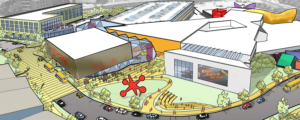
[bctt tweet=”“Collaborate, collaborate, collaborate. Find people with similar values. Find people that share your goals and make great things happen for you, your organization and state that you represent.” – @sdrhinewald #podcast #WhyCollaborate”]
That’s great. How about you, Karen, any parting words?
Karen: I just say look for a mentor, be a good mentor and the sky’s the limit. If you can dream it, it can happen.
That’s awesome. Love it. What a great way to wrap up. I thank you both so much for sharing your time with us today. And we’ll look forward to connecting with you again.
Karen: Thank you, Nicole.
Shane: Thank you so much, Nicole.
Resources:
- Website: museumofplay.org
We value your thoughts and feedback and would love to hear from you. Leave us a review on your favorite streaming platform to let us know what you want to hear more of. Here is a quick tutorial on how to leave us a rating and review on iTunes!
